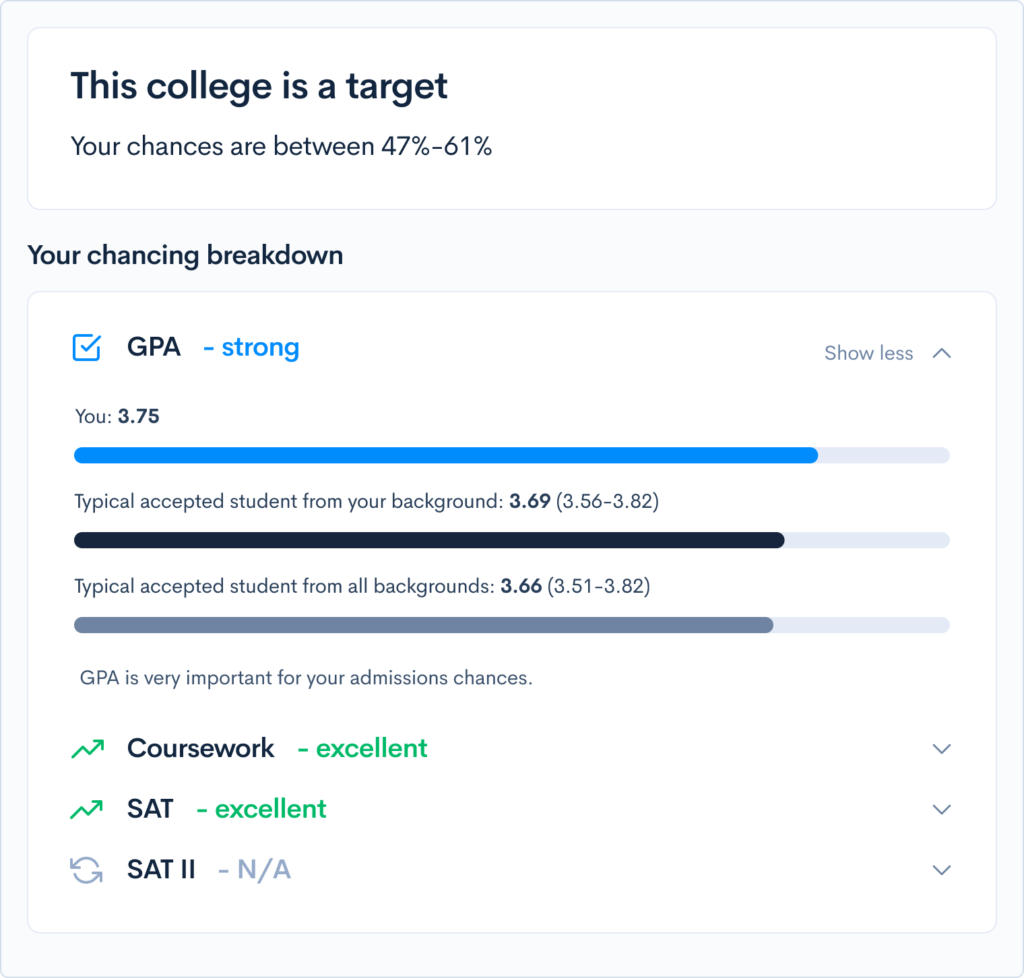A Guide to Princeton’s Eating Clubs
Princeton eating clubs are a long-standing tradition unique to the university. Though technically unaffiliated with the school—Princeton eating clubs are privately maintained and operated by undergraduates—they play an integral role in campus life. In this post, we’ll provide an overview of eating clubs, how they work, and the process of joining one. Princeton’s eating clubs date back to 1879 and are largely the result of two factors: the university’s opposition to fraternities and a lack of dining options available to students. In response, a group of 11 students pooled their resources and began taking their meals together at Ivy Hall—beginning the tradition of eating clubs and the genesis of the Ivy Club (which remains one of the most prestigious eating cubs today). Over the years, there have been 20 eating clubs, although no more than 18 have existed at one time. There are 11 eating clubs currently operating: Although the clubs still serve as dining halls for students, their role in student life has grown with the passage of time. Today, eating clubs are social centers for student activity—members come to the clubs to study, socialize, and relax. Clubs feature study space, libraries, and WiFi along with amenities like pool tables and TV rooms. Princeton eating clubs also throw parties, host events, and perform community service throughout the year. Eating clubs have an informal relationship with the university—they are private institutions that are run by undergraduates with oversight from graduate boards and professional staff. Despite their seeming independence from Princeton, eating club members are still held to the code of conduct the university outlines in its Rights, Rules, Responsibilities. Because eating clubs play a large role in the social life of their members, they’re commonly associated with fraternities and sororities; however, there are differences between the two. The most notable difference is that eating clubs are not residential—only club officers live at the building, and almost all of Princeton’s undergraduates live on campus in university housing. It’s common for students to room with classmates from different eating clubs, or with someone not affiliated with an eating club. Eating clubs are co-ed social clubs for juniors and seniors—students are eligible to join a club in the spring of their sophomore year and that is when most students join, although some wait and apply for membership as juniors and seniors. Currently, 68% of Princeton juniors and seniors are members of an eating club. Membership in an eating club lasts for life and alumni frequently return for reunions and to meet new members. Although participation in an eating club is popular at Princeton, it isn’t a necessity. Students can eat meals in one of the university’s residential colleges, dining halls, on-campus dining co-ops, or in town. In the 1970s, a handful of eating clubs changed their admissions process from selective (bickering) to open (sign in). There are now five clubs with open admissions: And six clubs that use a selective admissions process known as bickering: Membership in one of Princeton’s eating clubs with open admissions is awarded on a first-come, first-serve basis in a process known as “sign in,” in which sophomores list the eating clubs in order of their preference. Friend groups of up to 11 can sign up for the same eating club. If sign-ups outnumber available spaces, a lottery is held and members are selected at random. Students interested in admission to a selective club are able to sign up for membership in two selective clubs. The clubs then use a process known as bickering, a two- to three-day affair, to determine acceptance. The bicker process varies from club to club and includes anything from interviews to activities, following which club members pick up the sophomores they selected for admission. The expense of Princeton’s eating clubs has led some to believe that these institutions—even those with open admissions—favor students from high-income families. The cost of membership in the least expensive eating clubs is roughly $9,000 annually, while the undergraduate meal plan at Princeton currently costs $2,750. The cost at Princeton’s eating clubs in the 2019-2020 academic year was: Eating Club Cost for 2019-2020 Academic Year Cannon $9,700 Cap and Gown $9,625 Charter $8,900 Cloister Inn $9,750 Colonial $8,982 Cottage $8,900 Ivy $10,450 Quadrangle $9,060 (for students on full aid) and $9,360 (for students not on financial aid) Terrace $9,000 Tiger Inn $9,100 Tower $10,017 The majority of the eating clubs make an effort to make membership more affordable to lower-income students by offering discounts for early payment, implementing payment plans, and providing financial aid for qualifying students. Princeton University also provides an additional $2,000 of funding to juniors and seniors on financial aid to help cover the cost of eating clubs—if a student chooses not to join an eating club, they still receive those additional funds. Princeton eating clubs have a long and prominent role in the university’s history—F. Scott Fitzgerald famously describes them in his novel This Side of Paradise: “Ivy, detached and breathlessly aristocratic; Cottage, an impressive melange of brilliant adventurers and well-dressed philanderers; Tiger Inn, broad-shouldered and athletic, vitalized by an honest elaboration of prep-school standards; Cap and Gown, anti-alcoholic, faintly religious, and politically powerful; flamboyant Colonial; literary Quadrangle; and the dozen others varying in age and position.” The subtext of Fitzgerald’s characterizations, however, is that the eating clubs have not always been places where everyone has felt welcome. For example, Princeton President Woodrow Wilson (1902-1910)—who would later go on to become the President of the United States—worked to eliminate the eating clubs during his tenure. Wilson found the clubs “snobbish” and exclusionary, but failed to eliminate or enact any serious reform to the clubs while at Princeton, an issue that interested him long after his time at Princeton ended. In the 1949-1950 academic year, 23 students interested in joining an eating club had not received an invitation—about half of the students not accepted into a club were Jewish. Following this event, 15 Jewish students signed a statement saying, “I feel I have been discriminated against because of race or religion.” By the late 1950s, Princeton had created a system where every sophomore received an entry into an eating club—club officers would debate among themselves over who would accept bid-less students. While this eliminated exclusion of students from eating clubs, it created social stratification; another group of 23 students not receiving bids were called “100 percenters” and were thought to have no social status. In 1958, it became news when the media discovered that 18 of these 23 “100 percenters” were Jewish. Eating clubs have not just been accused of excluding students based on religion. It’s hard to believe, but it’s only been thirty years since all of Princeton’s eating clubs have been open to women—and only after years of activism, legal battles, and a ruling by the New Jersey Supreme Court. Today, Princeton’s eating clubs are more open, welcoming, and reflective of the university’s student population—this feels especially true for the open, “sign-in” eating clubs. In 2019, the New York Times published an article about Quadrangle’s attempts to attract more first-generation, low-income students. In 2020, the Interclub Council—a group composed of the 11 undergraduate eating club presidents—penned a letter in The Princetonian acknowledging the club’s troubled past and their plans to take meaningful action toward increased equality at the university. Returning to Fitzgerald’s portrait of Princeton eating clubs is another truth—the clubs are all subject to their own reputations and stereotypes, some of which have been cultivated over decades. Research will generate a lot of information on Princeton’s individual eating clubs, but in the end, there is no substitution for visiting one and meeting its members in person. Princeton is a top-ranked school with a rich history and unique traditions such as eating clubs, but is it right for you? CollegeVine has all the information you need to know about Princeton in one place to help simplify the decision-making process. This includes diversity statistics, campus setting, popular majors, and more. You may also find our free chancing calculator useful. This tool uses a variety of factors such as GPA, standardized test scores, and extracurricular activities to let you know your odds of acceptance, and it will also give you tips on making your profile as competitive as possible for Princeton. If you plan to apply to Princeton, make sure to check out these articles on the university’s admissions process: What’s Covered:
What Are Princeton’s Eating Clubs?
How to Join a Princeton Eating Club
Sign In vs. Bickering

The Cost of Eating Clubs
Are the Eating Clubs a Good or Bad Thing?
Is Princeton the Right School for You?

